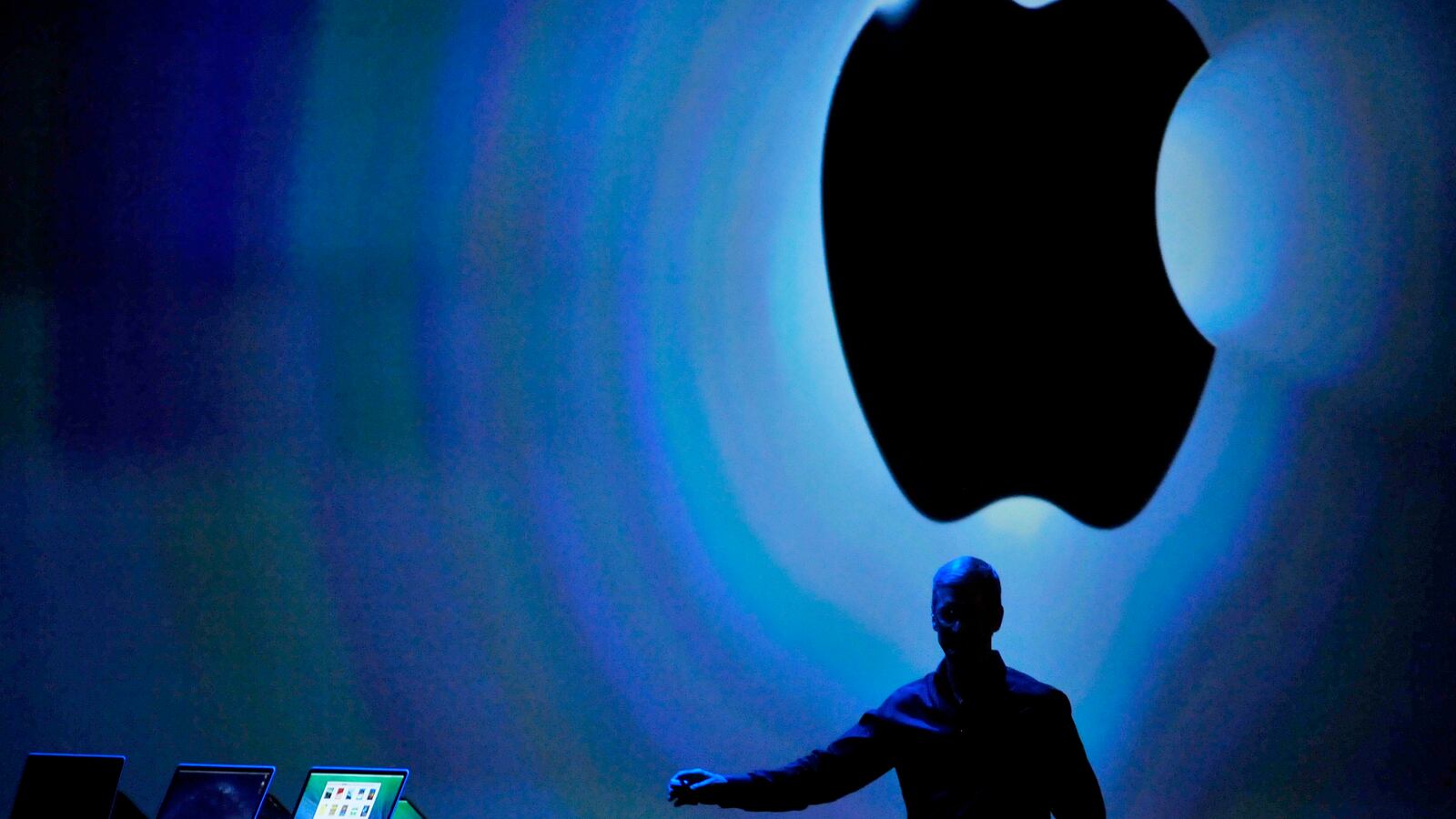Last week, the CFO of Pandora took to the stage at a corporate conference to boast that its market share had risen in October—the month following the release of Apple’s iTunes Radio.

The statement, which seemed to prove the newly released iTunes Radio wasn’t a “Pandora Killer,” made headlines. It was fodder for all the industry-watchers who recognize the significant revenue stream and sizable audience at stake. What may have begun as a rather innocent revolution in entertainment is now quickly giving way to an all-out war between digital radio competitors.
The arena is a rough and tumble environment where companies such as Pandora, Spotify, Slacker, and Rdio were already hard at work attempting out-strategize each other for market share when iTunes Radio appeared onto the scene on September 18 with all the pomp and promise of prowess that characterizes an Apple announcement. The question is clear: Just how much of a threat will the new iTunes Radio be?
“Apple’s M.O. is to basically show up late to the party and then crush everything. It works a lot of the time,” Paul Resnikoff, publisher of the respected music industry trade Digital Music News, told The Daily Beast. “If you use iTunes or like music, you are the consumer market for this. So it’s pretty gigantic…And iTunes Radio hasn’t even poked out of the U.S. yet.” According to Apple’s most recent earnings report, there are 575 million iTunes users around the globe.
Others are not so sure on a verdict just yet. “I think the battle for listeners [is far from over because] because it’s based on each of these companies trying to distinguish themselves based on a core competency,” says Dave Newmark, a radio pioneer and CEO and founder of Bid4Spots.com, which specializes in radio advertising. “Spotify and Pandora based on the accuracy of their algorithm, Apple for the breadth of its music content and variety of podcasts, and iHeart for its connection to terrestrial stations and its social and promotional components.”
The size of the radio market is much bigger than most consumers may realize. Traditional radio reaches some 240 million people in the U.S. each week, or 93 percent of people older than 12, who listened for an average of between 10 and 20 hours each week. “Traditional radio broadcasters have been able to monetize that listener base through advertising—about $15 billion each year,” says Newmark.
The digital radio powerati are hoping to usurp some of that advertising money and listener attention by offering personal curation. The major players typically offer some form of both a non-paid and premium (read: unlimited, ad-free and paid) version that appeals to listeners by providing music selections that are based on tracks that are similar to the one the user initially selects. The playlist becomes more refined as the listener interacts with the system by approving or disapproving of songs.
It’s certainly a growing user base. Pew Research Center recently released figures indicating that as many as 38 percent of Americans listen to audio on digital devices each week, and that number is projected to double by 2015. Analysts estimate that the Internet radio industry will top $1 billion in the coming years.
But of course, Apple does not accept advertising from outside companies—yet. According to the company, iTunes Radio attracted 20 million users in the first five weeks. “If you take the existing numbers, you can say that if Apple has about one-tenth of the listeners as does traditional radio….If they were to open up the advertising to any company, it should be worth about $1.5 billion,” says Newmark. “That, of course, is pocket change to Apple; but they are probably thinking that in the long run, they will build up the listener base and grow revenue that way by entering the game now.”
Advertising, coupled with a recent Clear Channel study that shows 80 percent of survey respondents said radio was helpful in discovering (read: purchasing) new songs, also could be the motivator for Apple to create a mammoth campaign around its radio offering if for no other reason than to drive iTunes sales. Indeed, iTunes Radio’s encouragement of users to download songs seems to be a key differentiator between the Apple platform and other digital radio offerings. Should a major marketing effort emphasizing the Apple product integration power be launched, all other competitors could be overshadowed.
This is a fact perhaps not lost on Pandora, which just recently acknowledged that though listening hours of its customers were up, it lost 2 million users in October, just shortly after the release of iTunes Radio. The number of users has climbed 20 percent since last October, however, to 72.7 million users.
But to win the battle, a company has to be in sync with consumer needs and habits. Explains Resnikoff: “Internet radio, and radio in general, revolve around the idea that people want to listen more than they want to play personal DJ. Which, in this context, means letting someone else serve you snacks you might like, instead of hunting through the aisles of your supermarket every time.”
And, in Apple’s case, it revolves around making sure the money it has made with iTunes and apps stays on its balance sheet. “Innovations in streaming audio with companies such as Pandora, Spotify, and now iHeart Radio are creating such powerful streaming audio products with such amazing variety…This cannot be good news for Apple,” says Newmark. “So in order to counteract this trend, they’re probably taking the ‘if you can’t beat them, join them’ approach.”





